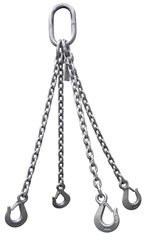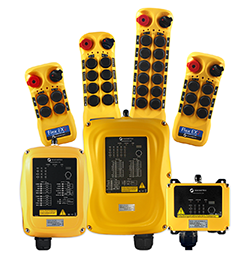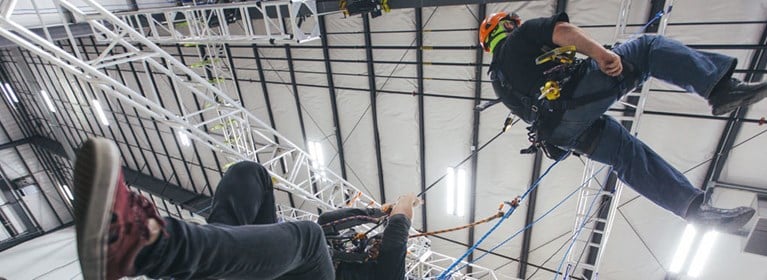Advantages of Lifting with Chain Slings vs. Synthetic Slings
Rigging |
Safety and Training |
By Henry Brozyna |
13 Sep 2019

Overhead Lifting Slings are generally used in conjunction with a crane, powered hoist, manual or lever hoist or some type of lifting device. There are numerous types of materials used for building overhead lifting slings – each with specific advantages and disadvantages – including:
- Chain
- Wire rope
- Synthetics
- Metal mesh.
Understand the Application Before You Spec a Sling
 Before you select a sling it is important to fully understand the application and gather specific information on how the sling will be used. When choosing a sling, you must know the weight, center of gravity, number of attachment points for a balanced lift, sling angles, reach, upper and lower fittings and ambient conditions. Communicate or obtain as much background information as you can about the load being lifted, then decide what type of sling works best. This will help ensure you choose the right sling material and configuration for the task at hand.
Before you select a sling it is important to fully understand the application and gather specific information on how the sling will be used. When choosing a sling, you must know the weight, center of gravity, number of attachment points for a balanced lift, sling angles, reach, upper and lower fittings and ambient conditions. Communicate or obtain as much background information as you can about the load being lifted, then decide what type of sling works best. This will help ensure you choose the right sling material and configuration for the task at hand.
Alloy Steel Chain: Recommended by ASME, NACM & OHSA
When using chain slings, the American Society of Mechanical Engineers (ASME), the National Association of Chain Manufacturers (NACM), and the Occupational Safety & Health Administration (OSHA) recommend only the use of alloy steel chain for overhead lifting. Grades 63, 80 and 100 are the alloy steel chains used throughout the industry. They contain elements that give them their unique strength, abrasion resistance, durability and toughness. Per ASTM Standards, alloy chain slings must have the ability to elongate at least 20% when overloaded in order to have a visual indicator to the rigger that the sling is overloaded. Once any stretch is discovered, the chain sling must be removed from service. Synthetics do not have any such indicators as standard.
Advantages of Chain slings versus Synthetic slings
Durability:
- Resists impact, cuts and abrasions
- Resistant to chemicals and UV radiation
- Can be used in oily or dirty environments
- Can be used at higher temperatures range -40oF thru 400oF with not reduction of WLL (synthetic slings can be used in temperatures no higher than 194oF)
- Minimum elongation when lifting or tensioning
- Long service life compared to synthetic slings
Versatility:
- Easily adjustable (synthetic slings cannot be adjusted and therefore are often used incorrectly)
- Can be constructed in the field
Inspection & Maintenance:
- Easy to inspect
- Completely reparable (cannot repair load-bearing fibers in synthetic slings)
139 Years of Chain & Forging Know-How
Columbus McKinnon’s chain manufacturing roots date back to the 1800s. We hold patents for chain and chain link design as well as the chain manufacturing processes, which help ensure our chain is the strongest and most reliable chain on the market today. We also invented the first alloy chain in 1933 – the forerunner to our industry-changing Herc-Alloy® 800 and 100 chains. In addition to chain, we also manufacture a variety of dual-rated hooks, links, sub-assemblies and other attachments that complement our chain offering.
For additional information on the safe and proper use of chain slings, check out our Safety Webinar on Chain Sling Inspection.
Central America-Andean-Caribbean - EN








 Before you select a sling it is important to fully understand the application and gather specific information on how the sling will be used. When choosing a sling, you must know the weight, center of gravity, number of attachment points for a balanced lift, sling angles, reach, upper and lower fittings and ambient conditions. Communicate or obtain as much background information as you can about the load being lifted, then decide what type of sling works best. This will help ensure you choose the right sling material and configuration for the task at hand.
Before you select a sling it is important to fully understand the application and gather specific information on how the sling will be used. When choosing a sling, you must know the weight, center of gravity, number of attachment points for a balanced lift, sling angles, reach, upper and lower fittings and ambient conditions. Communicate or obtain as much background information as you can about the load being lifted, then decide what type of sling works best. This will help ensure you choose the right sling material and configuration for the task at hand.